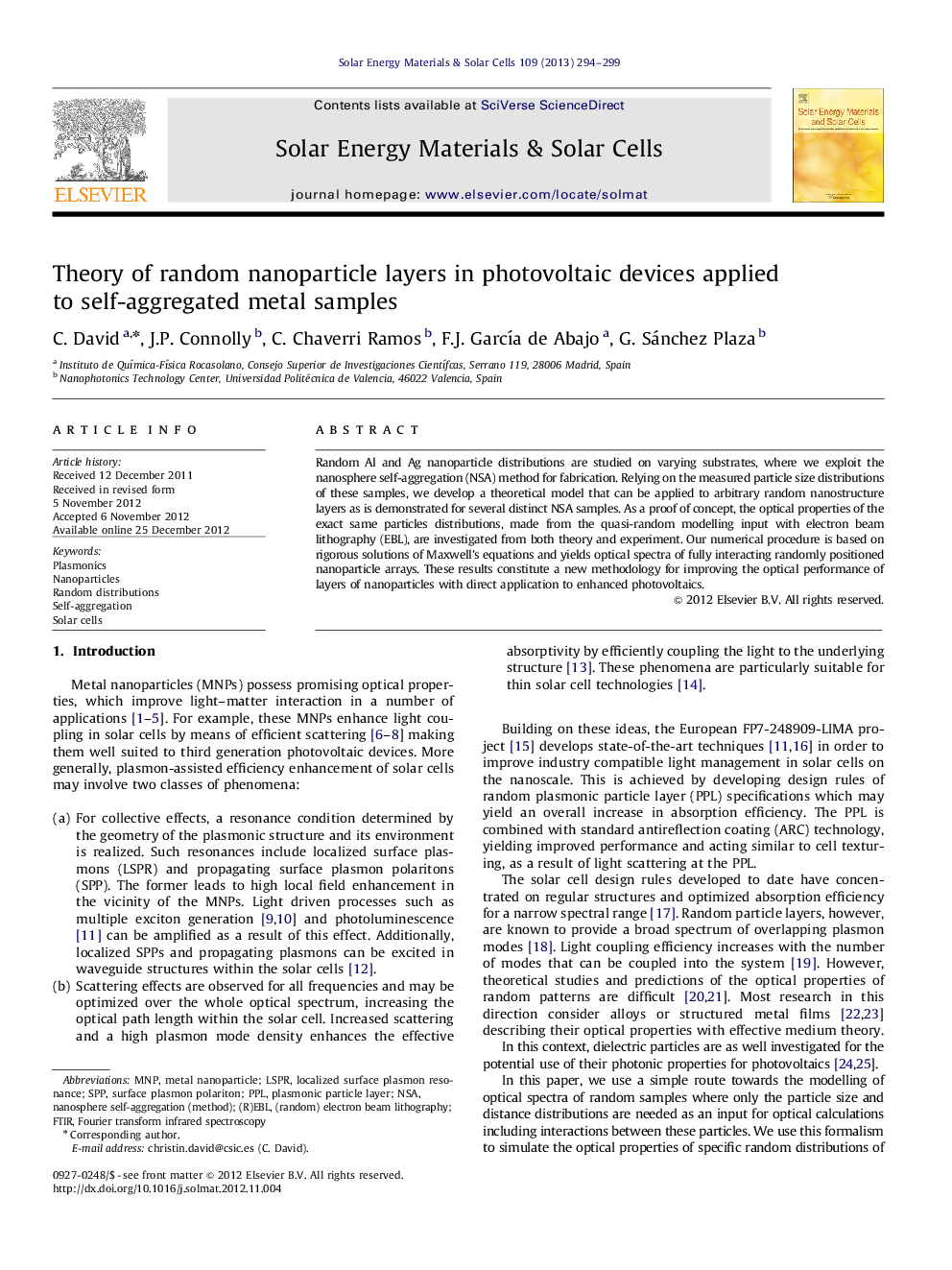| Article ID | Journal | Published Year | Pages | File Type |
|---|---|---|---|---|
| 78448 | Solar Energy Materials and Solar Cells | 2013 | 6 Pages |
Random Al and Ag nanoparticle distributions are studied on varying substrates, where we exploit the nanosphere self-aggregation (NSA) method for fabrication. Relying on the measured particle size distributions of these samples, we develop a theoretical model that can be applied to arbitrary random nanostructure layers as is demonstrated for several distinct NSA samples. As a proof of concept, the optical properties of the exact same particles distributions, made from the quasi-random modelling input with electron beam lithography (EBL), are investigated from both theory and experiment. Our numerical procedure is based on rigorous solutions of Maxwell's equations and yields optical spectra of fully interacting randomly positioned nanoparticle arrays. These results constitute a new methodology for improving the optical performance of layers of nanoparticles with direct application to enhanced photovoltaics.
► Experimental and theoretical analysis of random nanoparticle layers. ► Theory including hundreds of fully interacting, randomly positioned particles. ► Nanosphere self-aggregation of thin silver films into random particles. ► Parallel characterization of random samples, exploiting electron beam lithography. ► Statistical data on particle distribution as only input parameter.
